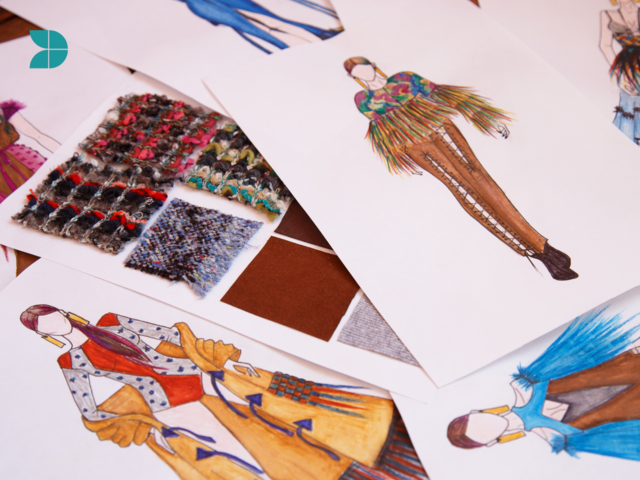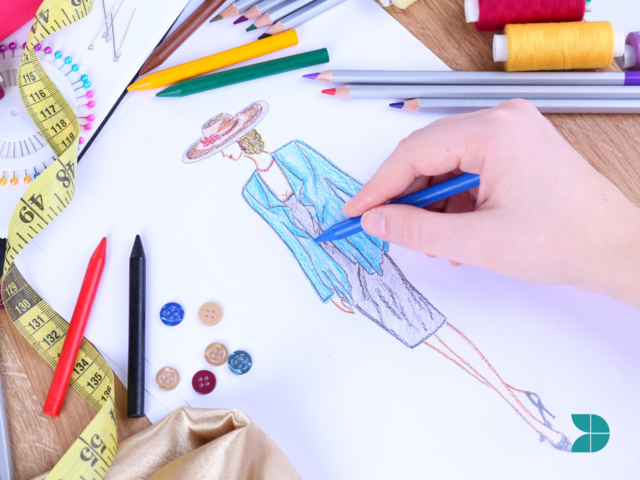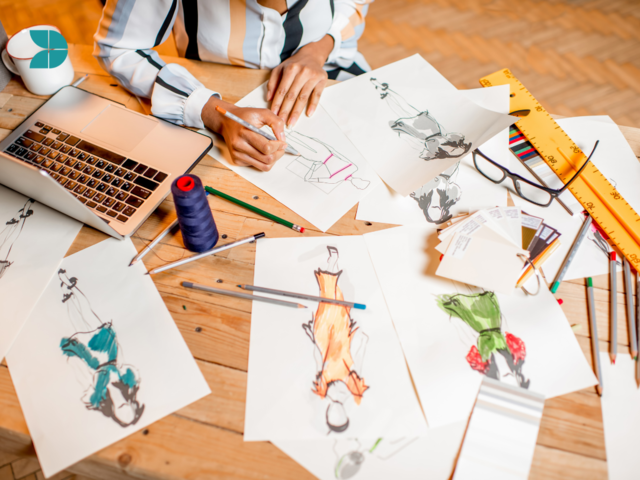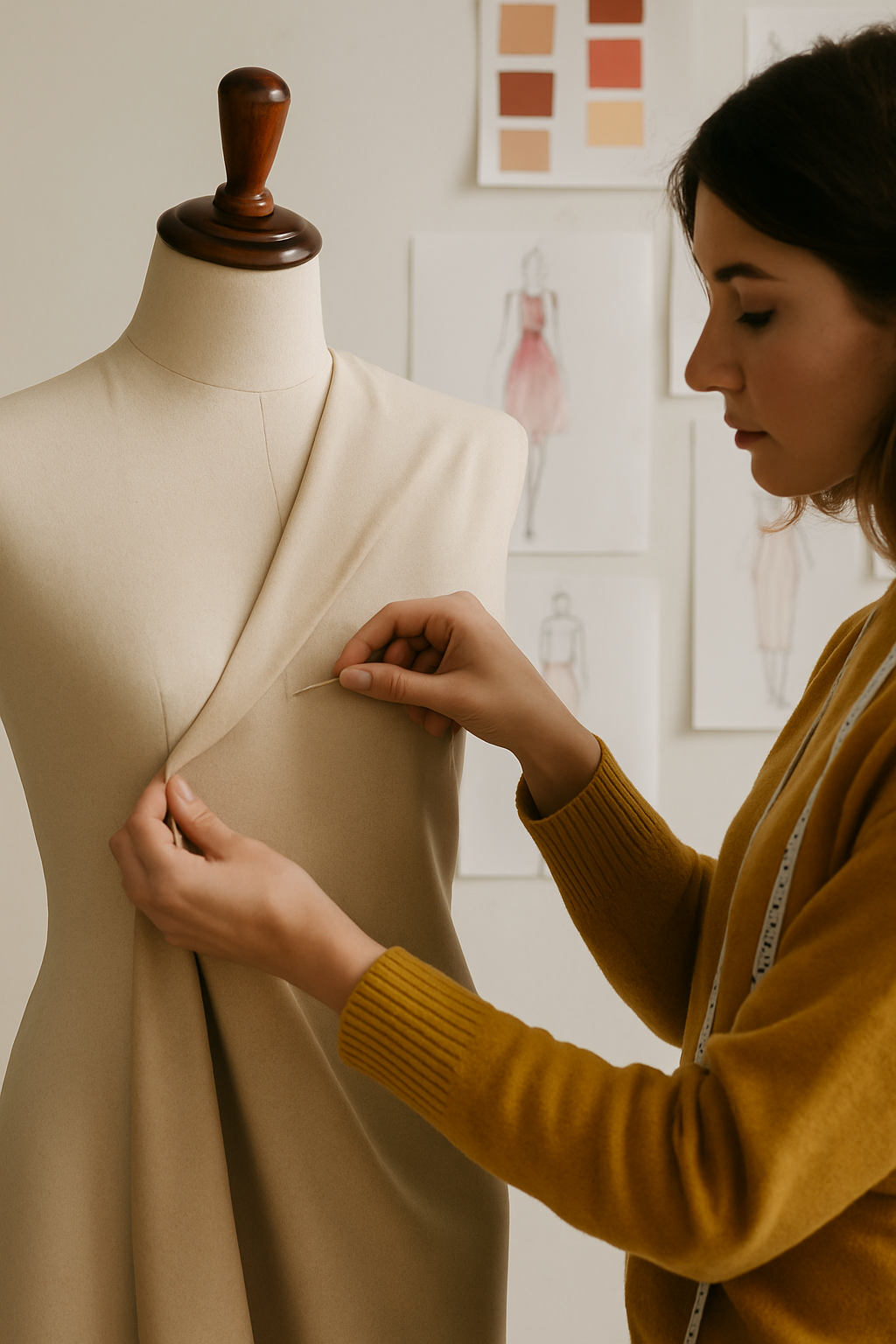Some fashion designers can be insecure about their drawing skills but fashion illustration is a beautiful way for a fashion designer to share their designs. Illustrations allow designers to communicate their ideas and to bring their designs alive on the page. They are a visual representation of clothing designs and can be presented using a variety of media such as pencils, markers, or software tools. Whether you're a beginner or an experienced designer, there are always new techniques and tips to enhance your fashion illustrations. In this article, we'll cover the basics to help you create beautiful sketches.

Understanding the Basics
Before you start creating your fashion illustrations, it's important to have a good understanding of the basics. Understanding human anatomy, proportions, and different poses is crucial in creating accurate and realistic fashion sketches. Clothing must work in harmony with the human body which means a fashion designer must be informed on at least basic anatomy in order to avoid unnecessary pitfalls. This leads to proportions which are integral to sizing and measuring the garment not to mention posing. The garment must be able to move with the body. Once a designer has a grasp on these basics, their drawings can then illustrate movement thus showcasing as much of the design idea as possible.
To improve your understanding of the basics, have a look at images of models or observe how people move. This will introduce a better understanding of how the body is structured. You can also take classes or watch online tutorials to learn more about anatomy and proportions.
Choosing the Right Tools
There are many options when it comes to drawing tools but choosing the right tools for you, is essential when gardening the confidence to draw your designs to the best of your ability. You may choose pencils, pens, markers, or any other medium that you prefer. Some artists prefer to work with traditional materials like pencils and markers, while others prefer digital tools like tablets and software. Regardless of the medium you choose, don’t be afraid to experiment with different tools. You never know which one will work best for your needs.
For traditional media, pencils work well for creating soft lines and shading and pens will produce a clean and crisp line. For digital media, software tools like Adobe Illustrator and Procreate are popular choices.

Sketching Out Your Designs
Once you have chosen your tools, it's time to start sketching out your designs. Start by sketching on paper. This will give you a rough idea of how your design will look which you can then refine and add more detail as you go along. Remember to use light lines and pencils for your initial sketches so you can easily erase any mistakes.
One useful way to sketch out your designs is to use croquis. This is a basic figure of the human form that can be used as a template for drawing different designs. You can also use templates that are available online or in fashion design books.
Adding Details
Next, it's time to add details. Adding details can make your fashion illustrations look more interesting and realistic which helps convey the feeling of the garment even though it’s drawn on paper. This includes adding textures, fabrics, and other design elements. You can use shading and different strokes to create a more three-dimensional effect. Don't be afraid to experiment with different techniques to create a unique look.
Textures refer to the surface quality of different materials, such as the roughness of denim or the smoothness of silk. Adding textures to your fashion illustrations will help communicate your design in a tactile way. The specific fabric or material that you intend to make your garment with can be a helpful addition to your drawings as it introduces you to the different properties of fabrics and can help you create more accurate and convincing illustrations. Other design elements can include things like buttons, zippers, and pockets, which can add detail and professionalism to your designs.
One technique to add depth to your illustrations is by using different tones and shading. Start by identifying the light source and creating shadows and highlights accordingly. Using different strokes and blending techniques can create a more realistic and 3-dimensional effect.

Practice, Practice, Practice
As with all skills, practice is key to improving and maintaining your fashion illustration skill set. Set aside some time each day to work on your sketches. You can also attend workshops to learn new techniques and to get feedback on your work. Getting feedback from other artists and designers can be helpful in identifying areas where you can improve and develop your own unique style.
Also, don't be afraid to experiment with different styles and techniques. It's important to find your own unique style and develop your own approach to fashion illustration. Take inspiration from other artists and designers but don't copy their work. Inspiration is all around and with an open and creative mind, you will be inspired everywhere you go!
Fashion illustration is an integral skill in fashion design and a potentially beautiful way to showcase your work. Choosing the right tools, sketching out your designs, adding details, and practising are all important factors in honing your skills. Enrolling in fashion design academy courses will improve your skills in preparing for a career in the fashion industry. With practice and dedication, you can take your fashion illustration skills to the next level and create stunning designs that will inspire others.
If you're interested in learning more about fashion illustration and other fashion design techniques, enrol in our fashion design academy courses. Our courses are designed to help you improve your skills and prepare you for a career in the fashion industry. You'll learn from experienced professionals and get hands-on experience.
Our courses cover a range of topics such as fashion illustration, pattern making, garment construction, and more. You'll have the opportunity to work on real-life projects and gain valuable experience. Our expert tutors will provide you with personalised feedback and guidance to help you reach your full potential.

